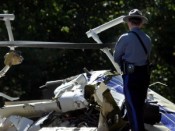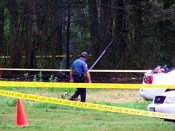Jacksonville, Florida Medical Transport Helicopter Crash
Bell 206 Helicopter used in Organ Transplant procurement Crash Kills Doctor and 2 others on board
On December 26, 2011 a Bell 206 helicopter flying from the Mayo Clinic in Jacksonville, to Shands, Florida crashed because of poor visibility and weather conditions, killing all on board.
The Bell 206 medical helicopter was on route to pick up a heart transplant at a Gainesville Hospital when the crashed occurred. The crash killed Dr. Luis Bonilla, a heart surgeon, David Hines, an organ procurement technician, and Pilot E. Hoke Smith, of St. Augustine based SK Logistics Company. The medical transport helicopter company operates as SK Jets and its fleet operates from the St. Augustine airport.
Due to weather conditions, the pilot of the Bell 206 helicopter became spatially disoriented causing him to strike a 50 foot pine tree and several other trees as it crashed in a wooded area about 12 miles northeast of the Palatka Municipal Airport.
Due to the crash, the heart was not able to be transported to Jacksonville and finding a new match for the heart would have taken longer than the four hour window between the harvest and the transplant operation.
The Pilot E. Hoke Smith was a decorated veteran of combat missions in Vietnam. Mr. Smith routinely flew medical transport flights, primarily during holidays when he gave his employees time off from his company SK Logistics.
Contact a Helicopter Lawyer
If you have been injured or a loved one has been killed in a helicopter crash, then call us 24/7 for an immediate consultation to discuss the details of the accident and learn what we can do to help protect your legal rights. Whether the accident was caused by negligence on the part of the helicopter owner, hospital or corporation, the manufacturer or due to lack of training, poor maintenance, pilot or operator error, tail rotor failure, sudden loss of power, defective electronics or engine failure or flying in bad weather conditions, we can investigate the case and provide you the answers you need. Call Toll Free 1-800-883-9858 and talk to a Board Certified Trial Lawyer with over 30 years of legal experience or fill out our online form by clicking below:



